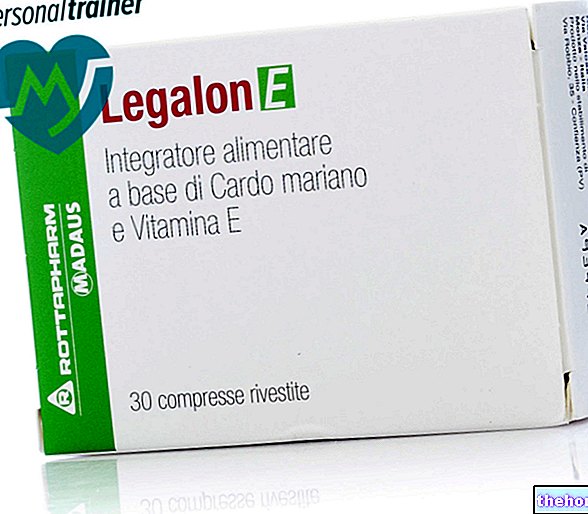Active ingredients: Cetrorelix (Cetrorelix acetate)
Cetrotide 0.25 mg powder and solvent for solution for injection
Indications Why is Cetrotide used? What is it for?
What is Cetrotide
Cetrotide contains an active substance called "cetrorelix acetate". This medicine blocks the release of an egg from the ovary (ovulation) during the menstrual cycle. Cetrotide belongs to a family of medicines called 'anti-gonadotropin releasing hormones'.
What Cetrotide is used for
Cetrotide is one of the medicines used during "assisted reproductive techniques" to promote pregnancy. It blocks the immediate release of the oocytes, because if the oocytes are released too early (premature ovulation), the doctor cannot take them.
How Cetrotide works
Cetrotide blocks a natural hormone in the body called LHRH (luteinizing hormone releasing hormone).
- LHRH controls another hormone, called LH ("luteinizing hormone").
- LH stimulates ovulation during the menstrual cycle.
This means that Cetrotide blocks the chain of events that lead to the release of the egg by the ovary. When the oocytes are ready to be collected, you will be given another medicine that induces the release of the oocytes (induction of ovulation).
Contraindications When Cetrotide should not be used
Do not use Cetrotide
- if you are allergic to cetrorelix acetate or any of the other ingredients of this medicine (listed in section 6)
- if you are allergic to medicines similar to Cetrotide (any other peptide hormone)
- if you are pregnant or breastfeeding
- if you are already in menopause
- if you have moderate or severe kidney or liver disease.
Do not use Cetrotide if any of the above apply to you. If in doubt contact your doctor before using this medicine.
Precautions for use What you need to know before taking Cetrotide
Allergies
If you have an active allergy or have suffered from allergies in the past, please tell your doctor before taking Cetrotide.
Ovarian Hyper-Stimulation Syndrome (OHSS)
Cetrotide is used together with other medicines that stimulate the ovaries to produce more eggs ready to be released. Ovarian hyperstimulation syndrome (OHSS) may occur during or after taking these medicines. This occurs when the follicles overgrow, becoming large cysts. For possible effects to watch for and to know what to do if you develop, see section 4 "Possible side effects".
Interactions Which drugs or foods can modify the effect of Cetrotide
Tell your doctor if you are taking, have recently taken or might take any other medicines.
Warnings It is important to know that:
Use of Cetrotide for more than one cycle
Experience with the use of Cetrotide for more than one cycle is limited. If you need to take Cetrotide for more than one cycle, your doctor will carefully consider the benefits and risks.
Children and adolescents
The use of Cetrotide is not indicated in children and adolescents.
Pregnancy and breastfeeding
You should not use Cetrotide if you are already pregnant or think you may be or if you are breastfeeding. Ask your doctor or pharmacist for advice before taking any medicine.
Driving and using machines
The use of Cetrotide is not expected to affect the ability to drive or use machines.
Dose, Method and Time of Administration How to use Cetrotide: Posology
Always use this medicine exactly as your doctor has told you. If in doubt, consult your doctor.
Use of this medicine
This medicine is only for abdominal injection just below the surface of the skin (subcutaneous). To avoid skin irritation, choose a different area of the abdomen every day.
- The first administration should be done under the supervision of your doctor. Your doctor or nurse will show you how to prepare and inject the medicine.
- You will be able to carry out subsequent administrations after your doctor has informed you of the symptoms that may indicate allergies and of the possible serious or life-threatening consequences that need immediate treatment (see section 4 "Possible side effects"). .
- Read carefully and follow the instructions described in the section at the end of this leaflet entitled "How to mix and inject Cetrotide".
- Day 1 of the treatment cycle will start using another medicine. You will start using Cetrotide a few days later. (See section "How much medicine to use".)
How much medicine to use
Inject the contents of one vial (0.25 mg of Cetrotide) once a day. It is recommended to use the medicine at the same time every day, with an interval of 24 hours between one dose and the next.
You can choose to inject every morning or every evening.
- If you choose morning administration, start your injections on day 5 or 6 of the treatment cycle. Your doctor will tell you the exact date and time. You will continue to use this medicine until the morning when your eggs are collected (ovulation induction).
OR
- If you have chosen evening dosing: start the injections on day 5 of the treatment cycle. Your doctor will tell you the exact date and time. You will continue to use this medicine until the evening before the egg retrieval (induction of ovulation).
If you forget to use Cetrotide
- If you forget a dose, inject it as soon as you realize it and tell your doctor.
- Do not inject a double dose to make up for a forgotten dose.
If you have any further questions on the use of this medicine, ask your doctor or pharmacist.
Overdose What to do if you have taken an overdose of Cetrotide
Serious effects are not expected if you accidentally inject more of this medicine than expected. The effect of the medicine will last longer. Therefore, in general, no specific measures are necessary.
Side Effects What are the side effects of Cetrotide
Like all medicines, this medicine can cause side effects, although not everybody gets them.
Allergic reactions
- Warmth, red skin, itchiness (often in the groin or armpits), red, itchy, raised areas (hives), runny nose, rapid or irregular throbbing, swollen tongue and throat, sneezing, wheezing or severe difficulty with breathing or dizziness. You may experience a severe or life-threatening allergic reaction to the medicine. This reaction is uncommon (occurs in less than 1% of women).
If you notice any of these side effects, stop using Cetrotide and tell your doctor right away. Ovarian Hyperstimulation Syndrome (OHSS) This can occur due to the other medicines you are using to stimulate the ovaries.
- Symptoms of ovarian hyperstimulation syndrome (OHSS) may be pain in the lower abdomen with feeling sick (nausea) or actual discomfort (vomiting). This may mean that the ovaries have overreacted to the treatment and have developed large. ovarian cysts This event is common (may affect up to 1 in 10 women).
- OHSS can become severe with significantly enlarged ovaries, less urine production, weight gain, difficulty breathing, or fluid in the abdomen or chest. This event is uncommon (may affect up to 1 in 100 women).
If you notice any of these side effects, tell your doctor right away.
Other side effects
Common (may affect up to 1 in 10 women):
- Mild and short-lasting skin irritation may occur at the injection site, such as redness, itching or swelling.
Uncommon (may affect up to 1 in 100 women):
- Feeling sick (nausea)
- Headache.
Reporting of side effects
If you get any side effects, talk to your doctor or pharmacist. This includes any possible side effects not listed in this leaflet. You can also report side effects directly via the national reporting system listed in Appendix V. By reporting side effects you can help provide more information on the safety of this medicine.
Expiry and Retention
Keep this medicine out of the sight and reach of children.
Do not use this medicine after the expiry date which is stated on the vial after EXP. The expiry date refers to the last day of that month.
Cetrotide powder in the vial and the sterile water (solvent) in the pre-filled syringe have the same expiration date. This is stated on the labels and carton.
Do not store above 25 ° C.
Keep the vial in the outer carton to protect the medicine from light.
The solution should be used immediately after preparation.
Do not use this medicine if you notice that the white granule in the vial has changed in appearance. Do not use it if the solution prepared in the vial is not clear and colorless or contains particles.
Do not throw any medicines via wastewater or household waste. Ask your pharmacist how to throw away medicines you no longer use. This will help protect the environment.
If you have any further questions, ask your doctor or pharmacist.
Deadline "> Other information
What Cetrotide contains
- The active ingredient is cetrorelix acetate. Each vial contains 0.25 mg of cetrorelix acetate.
- The other component is mannitol.
- The solvent is sterile water for injections.
What Cetrotide looks like and contents of the pack
Cetrotide is a white powder for solution for injection in a glass vial with a rubber stopper. It is available in packs of one vial or seven vials (not all pack sizes may be marketed).
In addition, for each vial, the packs contain
- a pre-filled syringe with sterile water for injections (solvent). This water is to be used for mixing the powder in the vial
- a yellow marked injection needle for injecting sterile water into the vial and withdrawing the prepared medicine from the vial
- a gray-marked injection needle to inject the medicine into the abdomen
- two alcohol wipes for disinfection.
HOW TO MIX AND INJECT CETROTIDE
- This section describes how to mix the powder with sterile water (solvent) and inject the medicine.
- Before you start using this medicine, please read these instructions completely and carefully.
- This medicine is for use only by you, no one else should use it.
- The needle, vial and syringe are for single use only.
Before starting
- To wash hands
- It is important that your hands and all objects used are as clean as possible.
- Place everything you need on a clean surface:
- a vial with the powder
- a pre-filled syringe with sterile water (solvent)
- a needle with a yellow mark, for injecting sterile water into the vial and withdrawing the prepared medicine
- a needle with a gray mark, for injecting the medicine into the abdomen
- two alcohol wipes.
Mixing the powder with sterile water for preparation of the medicine
- Remove the plastic cap from the vial
- There is a rubber stopper underneath, keep it on the vial.
- Clean the rubber stopper and the metal ring with the first alcohol wipe.
- Adding water from the pre-filled syringe to the powder in the vial
- Take the needle with the yellow mark out of the package.
- Remove the cap from the pre-filled syringe and screw the yellow needle into it. Remove the cap from the needle.
- Push the yellow needle through the center of the rubber stopper of the vial.
- Inject the water into the vial by slowly pushing the plunger of the syringe. Do not use any other type of water.
- Leave the syringe in the rubber stopper.
- Mixing the powder with the water in the vial
- Holding the syringe and vial carefully, swirl them gently to mix the powder with the water. Once mixed, the solution should appear clear, without particles.
- Do not shake to avoid blisters in the medicine.
- Refilling the syringe with the medicine from the vial
- Invert the vial.
- Pull the plunger out to withdraw the medicine from the vial into the syringe.
- If some of the medicine remains inside the vial, slowly retract the yellow needle until its end is just inside the rubber stopper. If you look sideways through the slit you can check the movements of the needle and the solution.
- Make sure you have withdrawn all the medicine from the vial.
- Put the cap back on the yellow needle. Unscrew the yellow needle from the syringe and rest the syringe on the surface.
Preparing the injection site and injecting the medicine
- Removal of air bubbles
- Take the needle with the gray mark out of the package. Screw the gray needle onto the syringe and remove the cap from the needle.
- Hold the syringe with the gray needle pointing up and check for air bubbles.
- To remove bubbles, gently tap the syringe until all air bubbles collect at the top, then gently push the plunger to release them from the syringe.
- Do not touch the gray needle and do not let the gray needle come into contact with any surface.
- Cleaning the injection site
- Choose the injection site on the abdomen, preferably around the navel. To reduce skin irritation, choose a different area of the abdomen every day.
- Cleanse the skin at the chosen injection site using the second alcohol-soaked tissue following circular movements.
- Puncture of the skin
- Hold the syringe in one hand, as if it were a pencil.
- Gently pinch the skin around the area where you want to inject the medicine with your other hand and hold it firmly.
- Slowly push the gray needle fully into the skin at a 45-90 degree angle and release the skin.
- Injecting the medicine
- Gently retract the plunger of the syringe. If blood appears, continue as described in step 5.
- If no blood appears, slowly push the plunger to inject the medicine.
- When the syringe is empty, slowly pull out the gray needle at the same angle.
- Once you have finished the injection, apply gentle pressure with the second alcohol wipe to the injection site.
- If blood appears:
- slowly pull out the gray needle at the same angle
- apply light pressure to the injection site with the second alcohol wipe
- empty the medicine into a container and continue as described in point 6
- wash your hands and start over with a new vial and a new pre-filled syringe.
- Disposal
- The needle, vial and syringe are for single use only.
- Put the cap back on the needles so they can be safely disposed of.
- Ask your pharmacist how to safely dispose of used needles, vials and syringes.
Source Package Leaflet: AIFA (Italian Medicines Agency). Content published in January 2016. The information present may not be up-to-date.
To have access to the most up-to-date version, it is advisable to access the AIFA (Italian Medicines Agency) website. Disclaimer and useful information.
01.0 NAME OF THE MEDICINAL PRODUCT -
CETROTITE 0.25 MG POWDER AND SOLVENT FOR SOLUTION FOR INJECTION
02.0 QUALITATIVE AND QUANTITATIVE COMPOSITION -
Each vial contains 0.25 mg of cetrorelix (as acetate).
After reconstitution with the solvent provided, each mL of solution contains 0.25 mg of cetrorelix.
For the full list of excipients, see section 6.1.
03.0 PHARMACEUTICAL FORM -
Powder and solvent for solution for injection.
Appearance of the powder: white lyophilisate
Appearance of the solvent: clear and colorless solution
The pH of the reconstituted solution is 4.0-6.0.
04.0 CLINICAL INFORMATION -
04.1 Therapeutic indications -
Prevention of premature ovulation in patients undergoing controlled ovarian stimulation followed by egg retrieval and assisted reproductive techniques.
Cetrotide has been used with human menopausal gonadotropin (HMG) in clinical trials, however limited experience with recombinant follicle stimulating hormone (FSH) has suggested similar efficacy.
04.2 Posology and method of administration -
Cetrotide should only be prescribed by a specialist with experience in the field.
Dosage
The first administration of Cetrotide must be carried out under the supervision of the physician and in conditions that allow the immediate treatment of any allergic / pseudo-allergic reactions (including life-threatening anaphylactic reactions). Subsequent administrations may be carried out by the patient herself after informing her of the signs and symptoms that may indicate hypersensitivity reactions, the consequences of such reactions and the need for immediate medical intervention if they occur.
The contents of one vial (0.25 mg cetrorelix) should be administered once daily, at 24 h intervals, either in the morning or in the evening. After the first administration, it is recommended to keep the patient under medical observation for 30 minutes to ensure that no allergic / pseudo-allergic reactions occur following the injection.
Elderly population
There is no indication for a specific use of Cetrotide in the elderly population.
Pediatric population
There is no indication for a specific use of Cetrotide in the pediatric population.
Method of administration
Cetrotide is given by subcutaneous injection in the lower quadrants of the abdomen.
Injection site reactions can be reduced by alternating injection sites in rotation, delaying injections at the same site, and injecting the medicine at a low rate to facilitate progressive absorption.
Morning administration : Treatment with Cetrotide should be started on the 5th or 6th day of ovarian stimulation with urinary or recombinant gonadotropins (approximately 96 to 120 hours after the start of ovarian stimulation) and should continue throughout the gonadotropin treatment period including the day of "induced ovulation.
Serving in the evening : Treatment with Cetrotide should be started on the 5th day of ovarian stimulation with urinary or recombinant gonadotropins (approximately 96 to 108 hours after the start of ovarian stimulation) and should continue throughout the treatment period until the evening before the day of "induced ovulation.
For instructions on reconstitution of the medicinal product before administration, see section 6.6.
04.3 Contraindications -
Cetrorelix should not be used in the presence of any of the conditions listed below:
• Hypersensitivity to the active substance or to structural analogues of gonadotropin releasing hormone (GnRH), to extrinsic peptide hormones or to any of the excipients listed in section 6.1.
• During pregnancy and breastfeeding.
• Patients with severe renal insufficiency.
04.4 Special warnings and appropriate precautions for use -
Allergic conditions
Cases of allergic / pseudo-allergic reactions, including life-threatening anaphylactic reactions, have been reported with the first dose (see section 4.8).
Particular attention should be paid to women who have signs and symptoms of allergic conditions or a known history of allergy predisposition. Treatment with Cetrotide is not recommended in women with severe allergic conditions.
Ovarian hyperstimulation syndrome (Ovarian Hyper-Stimulation Syndrome, OHSS)
Ovarian hyperstimulation syndrome may occur during or after ovarian stimulation. This eventuality must be considered as an intrinsic risk of gonadotropin stimulation techniques.
Ovarian hyperstimulation syndrome should be treated symptomatically, i.e. with rest, treatment with intravenous electrolytes / colloids, and heparin therapy.
A luteal support phase must be performed according to the procedures of the medical centers of reproduction.
Repeated ovarian stimulation procedure
There is limited experience to date on the administration of cetrorelix during a repeated ovarian stimulation procedure. Therefore cetrorelix should only be used in repeated cycles after a careful risk / benefit assessment.
Congenital anomalies
The prevalence of congenital anomalies after the use of assisted reproductive techniques (assisted reproductive technologies, ART) with or without GnRH antagonists may be slightly higher than observed after spontaneous conception, but it is not known whether this is due to factors related to couple infertility or ART procedures. Limited data from clinical studies from follow up, conducted in 316 infants of women given cetrorelix for the treatment of infertility, suggest that cetrorelix does not increase the risk of congenital abnormalities in the progeny.
Hepatic insufficiency
Cetrorelix has not been studied in patients with hepatic insufficiency, therefore caution should be exercised.
Kidney failure
Cetrorelix has not been studied in patients with renal insufficiency, therefore caution should be exercised.
Cetrorelix is contraindicated in patients with severe renal insufficiency (see section 4.3).
04.5 Interactions with other medicinal products and other forms of interaction -
No formal drug interaction studies have been performed with cetrorelix in vitro have shown that interactions with medicinal products that are metabolised by cytochrome P450 or glucuronidates or conjugated by any other route are unlikely. However, the possibility of interactions with gonadotropins or medicinal products that can induce histamine release in susceptible individuals cannot be completely ruled out.
04.6 Pregnancy and breastfeeding -
Pregnancy and breastfeeding
Cetrotide should not be used during pregnancy and lactation (see section 4.3).
Fertility
Experimental animal studies indicate that cetrorelix exerts a dose-dependent influence on fertility, reproductive activity and pregnancy. When the drug was administered in the sensitive period of gestation no teratogenic effects were observed.
04.7 Effects on ability to drive and use machines -
Cetrotide has no or negligible influence on the ability to drive and use machines.
04.8 Undesirable effects -
Summary of the safety profile
The most commonly observed undesirable effects are local injection site reactions such as erythema, edema and pruritus, usually transient in nature and mild in intensity. In clinical studies, these effects were observed with a frequency of 9.4% following multiple injections of Cetrotide 0.25 mg.
Mild to moderate ovarian hyperstimulation syndrome (OHSS) (WHO grade I or II) has been observed commonly and should be considered an inherent risk of the pacing procedure. In contrast, severe OHSS remains an uncommon event .
Uncommon cases of hypersensitivity reactions including pseudo-allergic / anaphylactoid reactions have been observed.
List of adverse reactions
The adverse reactions listed below are ranked by frequency of occurrence: very common (≥1 / 10), common (≥1 / 100,
Disorders of the immune system
Uncommon: Systemic allergic / pseudo-allergic reactions, including life-threatening anaphylactic reactions.
Nervous system disorders
Uncommon: Headache
Gastrointestinal disorders
Uncommon: Nausea
Diseases of the reproductive system and breast
Common: Mild to moderate ovarian hyperstimulation syndrome (WHO grade I or II) may occur, which is an inherent risk of the pacing procedure (see section 4.4).
Uncommon: Severe grade ovarian hyperstimulation syndrome (WHO grade III)
General disorders and administration site conditions
Common: Local reactions at the injection site, such as erythema, edema and pruritus, have been observed.
Reporting of suspected adverse reactions
The reporting of suspected adverse reactions that occur after the authorization of the medicinal product is important, as it allows continuous monitoring of the benefit / risk ratio of the medicinal product. Healthcare professionals are asked to report any suspected adverse reactions via the Italian Medicines Agency. , website: http://www.agenziafarmaco.gov.it/it/responsabili.
04.9 Overdose -
In humans, an overdose may lead to a lengthening of the duration of action but is unlikely to be associated with acute toxic effects.
In acute toxicity experiments on rodents, nonspecific toxic symptoms were observed after intraperitoneal administration of cetrorelix in doses more than 200 times those pharmacologically effective by subcutaneous injection.
05.0 PHARMACOLOGICAL PROPERTIES -
05.1 "Pharmacodynamic properties -
Pharmacotherapeutic group: anti-gonadotropin releasing hormones, ATC code: H01CC02
Mechanism of action
Cetrorelix is a luteinizing hormone releasing hormone (LHRH) antagonist. LHRH binds to the membrane receptors of pituitary cells. Cetrorelix competes with the binding of endogenous LHRH to LHRH receptors. Thanks to this mechanism of action, cetrorelix controls the secretion of gonadotropins (LH and FSH).
Cetrorelix inhibits the pituitary secretion of LH and FSH with a dose-dependent mechanism. The onset of suppression is practically immediate and this remains unchanged under continuous treatment with no initial stimulation effect.
Clinical efficacy and safety
In women, cetrorelix delays the onset of LH secretion and thus ovulation. In women undergoing ovarian stimulation, the duration of action of cetrorelix is dose-dependent. The effect of cetrorelix is maintained with repeated injections every 24 hours at a dose of 0.25 mg.
In both animals and humans, the hormone-antagonist effects of cetrorelix are totally reversible after discontinuation of treatment.
05.2 "Pharmacokinetic properties -
Absorption
The absolute bioavailability of cetrolix after subcutaneous administration is approximately 85%.
Distribution
The volume of distribution (Vd) is 1.1 L x kg-1.
Elimination
Total plasma clearance and renal clearance are 1.2 mL x min-1x kg-1 and 0.1 mL x min-1x kg-1, respectively.
The mean terminal half-lives after intravenous and subcutaneous administration are approximately 12 h and 30 h, respectively, thus confirming the efficacy of the absorption processes at the injection site.
Linearity
Subcutaneous administration of a single dose (0.25 mg to 3 mg of cetrorelix), as well as daily administrations for more than 14 days show linear kinetics.
05.3 Preclinical safety data -
Non-clinical data reveal no special hazard for humans based on conventional studies of safety pharmacology, repeated dose toxicity, genotoxicity, carcinogenic potential, reproductive toxicity.
In experimental studies on acute, subacute or chronic toxicity in mice and dogs, no target organ toxicity was found from subcutaneous administration of cetrorelix. There were no signs of local irritation or incompatibility referable to the medicinal product after intravenous, intra-arterial and paravenous injection in the dog, despite having administered cetrorelix in doses much higher than those established for clinical use in humans.
Cetrorelix did not demonstrate any potential mutagenic or clastogenic activity in gene and chromosomal mutation studies.
06.0 PHARMACEUTICAL INFORMATION -
06.1 Excipients -
Dust:
Mannitol
Solvent:
Water for injections
06.2 Incompatibility "-
This medicinal product must not be mixed with other medicinal products except those mentioned in section 6.6.
06.3 Period of validity "-
2 years.
The solution should be used immediately after preparation.
06.4 Special precautions for storage -
Do not store above 25 ° C.
Keep the vial (s) in the outer carton to protect the medicine from light.
06.5 Nature of the immediate packaging and contents of the package -
Packs with 1 or 7 type I glass vials closed with a rubber stopper.
In addition, the pack contains, for each vial:
1 pre-filled syringe (type I glass cartridge closed with a rubber stopper) with 1 mL of solvent for parenteral use
1 injection needle (20 gauge)
1 hypodermic injection needle (27 gauge)
2 alcohol wipes.
Not all pack sizes may be marketed.
06.6 Instructions for use and handling -
Cetrotide must only be reconstituted with the accompanying solvent by gently shaking the vial.
Avoid violent movements that can lead to the formation of bubbles.
The reconstituted solution is clear and free of particles. Do not use if the solution contains particles or is not clear.
Withdraw the entire contents of the vial. This ensures that a dose of at least 0.23 mg of cetrorelix is delivered to the patient.
The solution should be used immediately after reconstitution.
Unused medicine and wastes derived from this medicine must be disposed of in accordance with local regulations.
07.0 HOLDER OF THE "MARKETING AUTHORIZATION" -
Merck Serono Europe Limited
56, Marsh Wall
London E14 9TP
UK
08.0 MARKETING AUTHORIZATION NUMBER -
EU / 1/99/100/001
EU / 1/99/100/002
034419010
034419022
09.0 DATE OF FIRST AUTHORIZATION OR RENEWAL OF THE AUTHORIZATION -
Date of first authorization: 13 April 1999
Date of first renewal: April 15, 2004
Date of most recent renewal: April 13, 2009
10.0 DATE OF REVISION OF THE TEXT -
04/2016




























